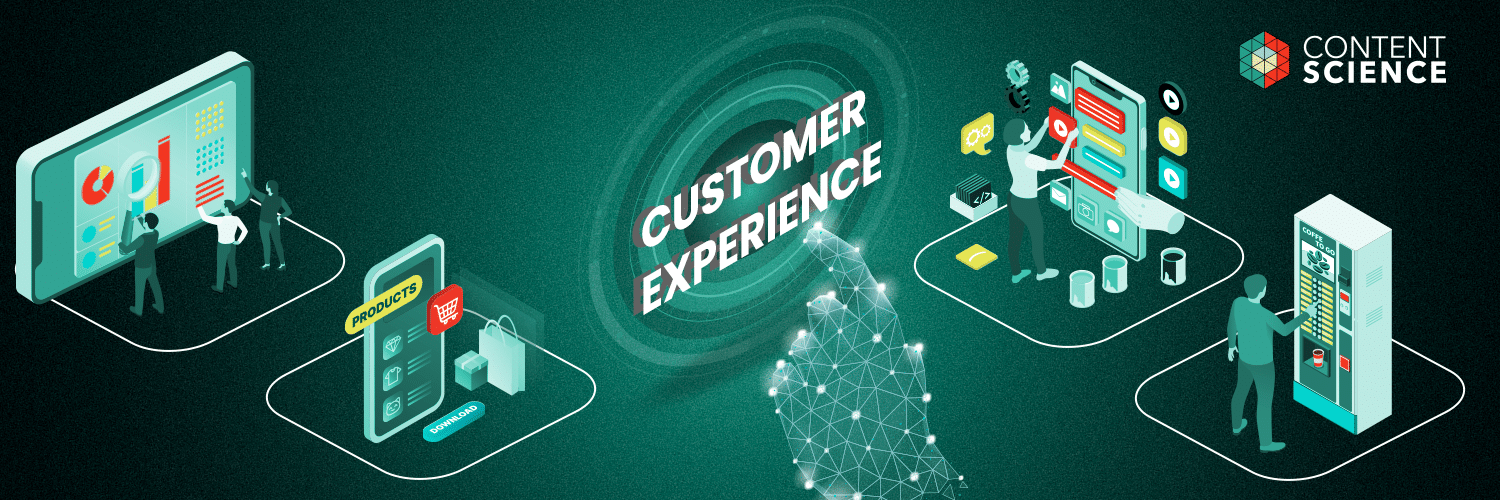
Editor’s Note: This article originally appeared on Entrepreneur.com.
Companies today have to compete on customer experience. And most companies, about 66%, think they’re delivering. However, many customers feel differently. Recent research found that 54% of buyers believe companies treat customer experience as an afterthought.
What’s more, research by McKinsey indicates up to 70% of digital transformations, which usually seek to modernize CX, fail. Why the disconnect?
One big factor is focusing too much on technology and too little on content when modernizing or improving customer experience. Content, including text, images, audio, video, documents and more, is the substance of customer experience across touchpoints such as websites, email, social media, mobile apps, SMS, IVR, chatbots and call centers. Far more of your customers will interact with your company’s content than with your company’s employees — and do so far more often.
So, how do you turn more attention to content as your company strives to compete on CX? Start by looking for opportunities in content for onboarding, feature adoption, order status and self-service.
1. Content in Onboarding
Winning a new customer is a precious thing, usually costing more than winning business from a current customer. However, most companies waste the opportunity by using a poor approach to onboarding or welcoming the customer. Typical problems include:
- No onboarding or welcome content at all, which risks losing the customer’s attention and engagement.
- The messaging and the tone in communications are disconnected from the tone and promises made in the sales process, which risks causing confusion or disappointment.
- The content is ponderous documentation of a product rather than a useful guide, which risks causing confusion and frustration.
For good examples, look to world-class SaaS, such as Mailchimp and AirBnB, which use a friendly tone and clear messaging in content, such as orienting tours, set-up wizards, reminders, guides with best practices and tips for success. Retailer and ecommerce businesses such as Target, Crate & Barrel and Pretty Alright Goods offer useful content ranging from special discounts to suggesting tips.
2. Content in Adopting Features or Products
If you’re a business that sells products, then chances are you want customers to use the products and try more of their features. The more customers use them successfully, the more likely they’ll want to keep using them. Content can go a long way toward guiding your customers to use your products correctly and even to upgrade. Typical problems include:
- No content to assist customers.
- Overly promotional or pushy tone for trying a new feature or upgrade.
- Generic instead of personalized tips or suggestions.
- Personalized suggestions that are actually not relevant, such as suggesting buying more refrigerators after a customer already purchased one.
- Product focus (e.g., this is how the feature works) instead of customer success focus (e.g., this is how to use the feature to get more value from the product).
- Poorly written and designed guides and documentation, especially for more technical products.
- Inaccurately translated and localized guides and documentation for global customers.
3. Content in Communicating Order Status
If your business involves taking and fulfilling orders, then communicating the status of those orders is the crux of your CX. Do it well across all of your touchpoints, and customers feel confident in you, even if something unexpected happens. Do it poorly, and customers become uncertain and more likely to call for an explanation or cancel.
Many problems can happen when communicating about orders. A few examples include:
- Not communicating the order status at all or communicating too little.
- Using the wrong tone, such as a cold or impersonal tone, when communicating a delay.
- Disconnects between what an email, text or chatbot says and what the website or mobile app says.
- Communicating a change or problem in a vague or confusing way.
- Communicating too much about the order status, which inundates the customer with emails and texts.
- Communications that link to poorly written and designed content, such as return policies, shipping explanations and FAQs.
4. Content in Embracing Self-Service
Most customers today are open to using self-service, and many actually prefer it. You can help customers help themselves with content such as notifications, alerts, instructions, button labels, error messages, confirmation messages, contextual help, and guides. Problems include
- No content to let customers know about self-service options.
- Poorly written instructions, form labels and contextual help.
- Cryptic error messages that don’t explain what the customer needs to correct.
- No explanation of how self-service benefits the customer.
- Poorly written guides for complex self-service tasks.
- Lack of flow between self-service tasks and supporting content.
- Chatbots and copilots provide assistance that is inaccurate, offputting, or minimally helpful.
So, integrate content into your vision for customer experience or digital transformation to gain a content advantage in customer experience. Establish a center of content excellence to align departments that communicate with customers and ensure consistent content governance. Invest in modern content roles, such as content designers, to create customer-centric experiences. Finally, consider partnering with experts in content strategy to accelerate your progress and drive impactful results.
Events, Resources, + More
New Data: Content Ops + AI
Get the latest report from the world's largest study of content operations. Benchmarks, success factors, commentary, + more!
The Ultimate Guide to End-to-End Content
Discover why + how an end-to-end approach is critical in the age of AI with this comprehensive white paper.
The Content Advantage Book
The much-anticipated third edition of the highly rated book by Colleen Jones is available at book retailers worldwide. Learn more!
20 Signs of a Content Problem in a High-Stakes Initiative
Use this white paper to diagnose the problem so you can achieve the right solution faster.






Comments
We invite you to share your perspective in a constructive way. To comment, please sign in or register. Our moderating team will review all comments and may edit them for clarity. Our team also may delete comments that are off-topic or disrespectful. All postings become the property of
Content Science Review.